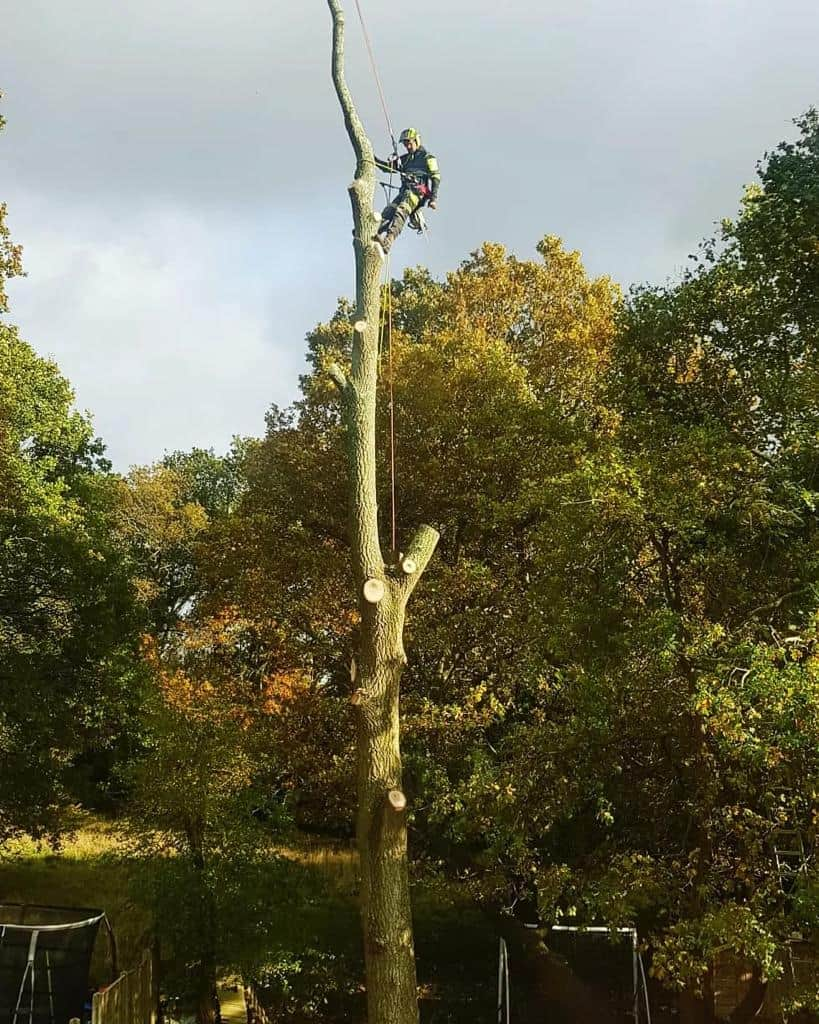Planting young trees is a long-term investment in the health, beauty, and structure of any garden, estate, or public green space. However, to ensure those trees mature into strong, well-shaped, and low-maintenance specimens, early formative pruning is essential. At Newport Tree Surgeons, we carry out formative pruning for clients throughout Newport, Essex, helping to establish healthy growth patterns and prevent future structural problems.
Understanding the value of formative pruning early in a tree’s life can save you from expensive corrective work down the line and ensure the tree reaches its full potential.
What Is Formative Pruning?
Formative pruning is a proactive, light-touch pruning technique applied to young trees—typically within the first five years after planting. The goal is to:
- Shape the tree’s structure for strength and balance
- Remove weak, crossing, or poorly positioned branches
- Encourage a dominant central leader in upright-growing species
- Set the tree on a healthy trajectory that requires minimal future intervention
This approach is particularly important in both domestic gardens and large-scale planting projects across Newport, Essex where tree health, safety, and aesthetics matter.
Why Formative Pruning Is So Important
1. Encourages Strong Structural Framework
Early pruning helps young trees develop a robust framework of well-spaced, balanced branches.
- Reduces the risk of weak branch unions later in life
- Supports even weight distribution as the tree matures
- Minimises storm damage and wind-related failure in future years
Establishing this framework early on avoids the need for heavy corrective pruning in maturity, which can be stressful for the tree and costly for the owner.
2. Promotes Healthier Growth
By removing poorly positioned or competing branches early, formative pruning improves the tree’s overall vigour.
- Reduces internal congestion within the canopy
- Increases airflow and sunlight penetration
- Prevents rubbing wounds and associated decay
At Newport Tree Surgeons, we work with a wide variety of species, tailoring our approach to suit the tree’s natural form and long-term growth pattern.
3. Minimises Future Maintenance and Costs
Trees that are left to grow unchecked in their early years often develop:
- Awkward branch angles
- Co-dominant leaders
- Dense or unbalanced crowns
- Structural weaknesses that require corrective work
Formative pruning prevents these issues before they develop, meaning the tree will require less maintenance and fewer interventions as it matures.
4. Enhances Aesthetic Appeal
Well-pruned young trees are more likely to develop into attractive, naturally shaped specimens.
- Complements landscaping design in domestic gardens
- Increases kerb appeal and property value
- Supports consistent growth across estate plantings or public areas
We help clients in Newport, Essex achieve attractive long-term results through careful shaping in the tree’s formative years.
5. Supports Species-Specific Requirements
Different species respond in unique ways to pruning. Some fast-growing trees benefit from annual shaping, while slower-growing or architectural species may need a more restrained approach.
Our team at Newport Tree Surgeons is experienced in working with a wide range of native and ornamental trees, ensuring each receives the correct care from the start.
When Should Formative Pruning Be Carried Out?
The best time for formative pruning depends on the tree species and growth stage, but general guidelines include:
- Late winter to early spring – Most suitable for deciduous trees while dormant
- After the first growing season – Once roots have established and growth patterns are visible
- Annually for the first 3–5 years – To gradually refine the shape and remove any developing issues
We always assess weather conditions, tree species, and site-specific factors before recommending a pruning schedule.
What Does Formative Pruning Typically Involve?
Depending on the species and tree condition, formative pruning may include:
- Removing damaged or broken branches
- Eliminating crossing or inward-growing limbs
- Encouraging a single central leader
- Raising the canopy slightly to allow clearance underneath
- Ensuring balanced branch spacing around the trunk
Unlike heavy pruning, formative work is subtle and precise—always aiming to guide rather than reshape.
Why Choose Newport Tree Surgeons?
We’re trusted by homeowners, estate managers, and local authorities across Newport, Essex for professional tree care. Our services include:
- Expert assessments of young tree health and structure
- Formative pruning tailored to each tree species
- Use of clean, sharp tools to prevent damage
- Consideration of long-term growth, space, and landscape requirements
- Advice on ongoing maintenance and seasonal care
We believe that preventative tree care is always better—and more affordable—than remedial work in later years.
Conclusion
Formative pruning is a vital yet often overlooked part of successful tree care. By shaping young trees early, you create strong, healthy, attractive specimens that require less maintenance and are less prone to damage or disease in the future. If you’ve recently planted trees or are managing young stock in or around Newport, Essex, get in touch with Newport Tree Surgeons. Our experienced team can provide expert advice and skilled pruning to set your trees on the right path from the very beginning.
Call us on: 01799 610 371
Click here to find out more about Newport Tree Surgeons
Click here to complete our contact form and see how we can help with your tree care needs.

